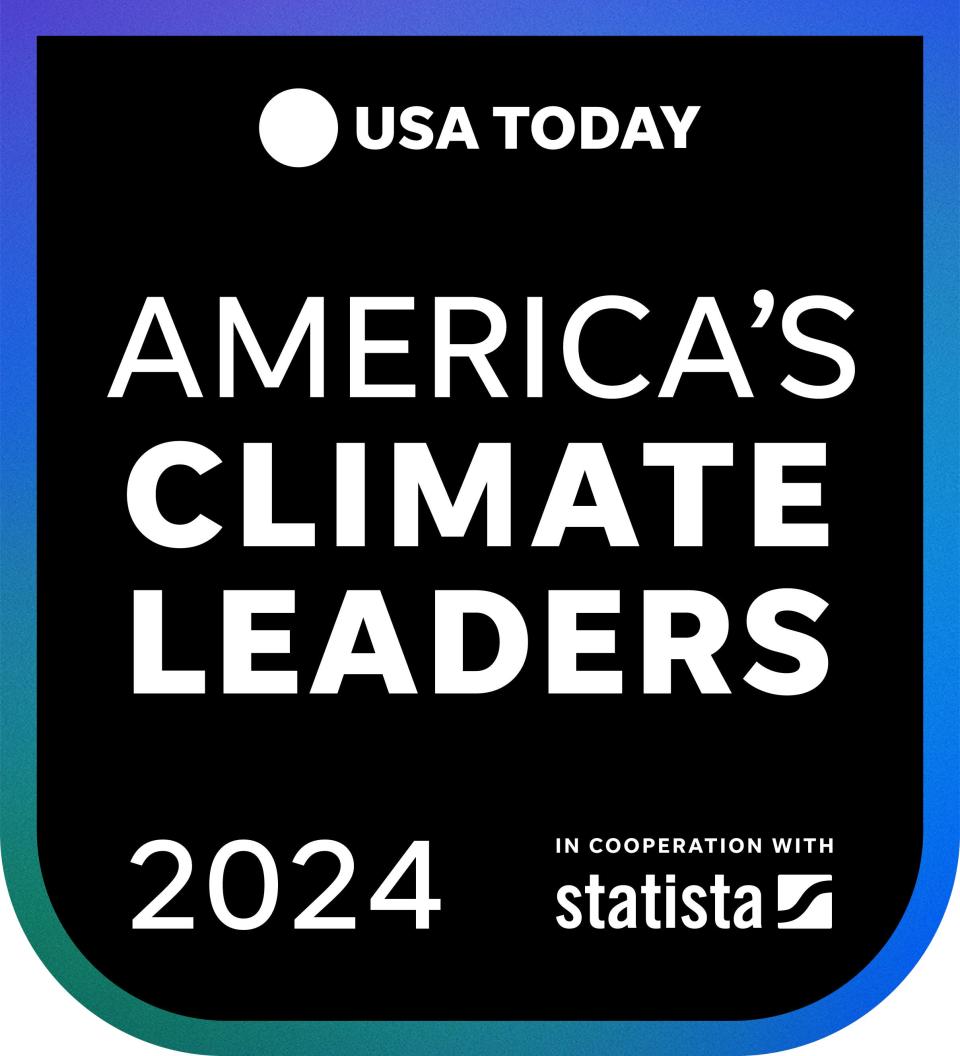These US companies are best at cutting their emissions to fight climate change


People across America are trying to do their part to fight climate change by buying electric cars, installing solar panels and making decisions large and small that reduce their carbon footprint. Some companies are too.
Those actions can make a big difference: between them, the U.S. industrial and commercial sectors were responsible for 25% of the nation's total carbon dioxide emissions in 2023, according to the U.S. Energy Information Administration. (Transportation still makes up the lion's share at 38%.)
But which companies are doing the best at reducing their carbon footprint? That's a surprisingly difficult question to answer. It's also an important question for customers and investors who want to support companies making climate-friendly strides in their business.
Currently, there are no federal or even state requirements in place requiring companies to disclose how much they’re lowering their greenhouse gas emissions.
To better understand which U.S. businesses are making progress, USA TODAY has partnered with market research firm Statista to create the second annual America's Climate Leaders list. It provides an easy to comprehend, data-driven metric of companies that have significantly decreased their carbon dioxide emissions (adjusted by revenue) between 2020 and 2022.
Since last year’s list, there was a 16% increase in companies meeting the inclusion criteria. The list includes U.S. based companies with more than $50 million in revenue that reported their carbon emissions independently. To make the list, those companies must have reduced their carbon intensity (carbon emissions divided by revenue) by 3% year-to-year.
Why is it so tough to determine which companies are best at reducing their carbon footprint?
In short: The data is messy and inconsistent.
Evaluations of companies' climate impact require deep dives into multiple, sometimes conflicting metrics. That's because there’s no U.S. requirement that companies disclose their emissions, though many do so voluntarily.
“Data availability is getting better,” said Lisa Abels, a senior analyst with Statista who worked on the list.
It could keep improving, too.
Last month, after a two-year effort, the U.S. Securities and Exchange Commission passed new rules requiring some public companies to report their greenhouse gas emissions and climate risks. The final result was less strong than originally proposed and its climate disclosure rules don’t begin until 2026 when the first large companies will be required to include information in their annual reports.
As of 2024 an appeals court had temporarily paused the rules, so it’s not clear when or if they will go into effect.
California has also enacted climate-related reporting requirements for companies doing business in California with total annual revenues in excess of $500 million but it will not take effect until January 2025.
With no national requirements for reporting carbon dioxide pollution currently in effect, having more transparency and data about companies’ emissions is “incredibly important,” said Christian Leuz is a professor at the University of Chicago’s Booth School of Business and a scholar at the Energy Policy Institute. A study he co-authored in 2023 found that if global corporations had to pay for the damages caused by their greenhouse gas production it would cost 44% of their profits.
Data that allows the public to see how emissions relate to companies’ activities and are changing over time lets consumers and investors make informed comparisons between companies – which can have “a real impact,” said Leuz.
“Such benchmarking can create peer pressure, stimulating investors, other stakeholders and customers to call on firms to do more to reduce their emissions. Companies voluntarily making this data public is an important first step,” he said.
Mandates to make such disclosures would “be even better, as it would shine the light on companies with high emissions that are reluctant to provide these data voluntarily,” he added.
How do companies make it on USA TODAY's list of America's Climate Leaders?
The first list, developed last year, began with 2,000 U.S.-based companies which were narrowed to 400 that cut their emissions intensity from 2019 to 2021. For 2024, the list was expanded to 450 companies and looked at their emissions between 2020 and 2022.
The ranking uses these and other indicators to gain a picture of how good a job companies have done at lowering their carbon emissions. Because the analysis includes 2020, during the onset of the COVID-19 pandemic, some of the metrics are difficult to evaluate because of the hit the global economy took, resulting in sharp drops in emissions worldwide.
This year’s analysis compares companies' core emissions adjusted by revenue for the years 2020 and 2022. This measure is called emission intensity. As the pandemic unfolded, 2020 was an especially bad year for revenue for many companies, making 2022 emission intensity lower but that’s partly driven by an increase in revenues after the pandemic years, said Abels.
“The absolute emissions didn’t go down as much I expected or hoped for, which will be important for years to come,” she said. The distortions caused by the pandemic are still visible in this year’s data. Some may still be present in the data used for the rankings in next year's but should be entirely gone by 2026, she said.
Overall, U.S. emissions numbers across the board have been coming down, with the number of million metric tons of carbon dioxide released by the United States down 6.6% since 2019. Much of that decrease came because U.S. electricity is getting cleaner.
What companies ranked highest on USA TODAY's list of America's Climate Leaders?
At the very top of the Climate Leaders list is Dayforce (formerly called Ceridian), a human resources and software company.
By switching to 100% renewable energy across its global operations, Dayforce reduced its greenhouse gas emissions from more than 10,000 metric tons CO2 equivalents in 2020 to less than 500 metric tons CO2 equivalents in 2022.
It is followed by T-Mobile, which was on top of last year’s list. The third spot goes to financial company Cboe Global Markets.
How companies were chosen
The rankings began with a list of more than 2,000 US-based companies with revenue of more than $50 million in 2022. Of those, 700 reported their emissions data, making a verifiable ranking possible.

Here are some of the data and considerations used in the rankings:
Emission intensity: The amount of greenhouse gas a company produced relative to its revenue. This helps put big companies and small companies on a level playing field.
Annualized reductions in emission intensity: Calculated between 2020 and 2022. Companies that showed low reductions were not considered.
Carbon disclosure rating: A measure of a company’s environmental sustainability. These rankings are administered by CDP, a nonprofit that runs a global disclosure system for companies’ environmental impacts.
Other criteria: Some enterprises were excluded if known business practices suggested they couldn’t be seen as a climate leader.
Data used: Scope 1 and 2 emissions, based on the Greenhouse Gas Protocol, the world’s most widely used greenhouse gas accounting standard.
The full, interactive list below allows readers to view a variety of criteria, including year-over-year reduction of emission intensity, emission intensity, how many tons of CO2 equivalents the company emitted, total emissions reduction, and whether a company participated in two highly regarded programs that set targets for and account for emissions, the CDP and Science Based Targets initiative.
This article originally appeared on USA TODAY: America's Climate leaders 2024: USA TODAY & Statista rank companies

 Yahoo Finance
Yahoo Finance 